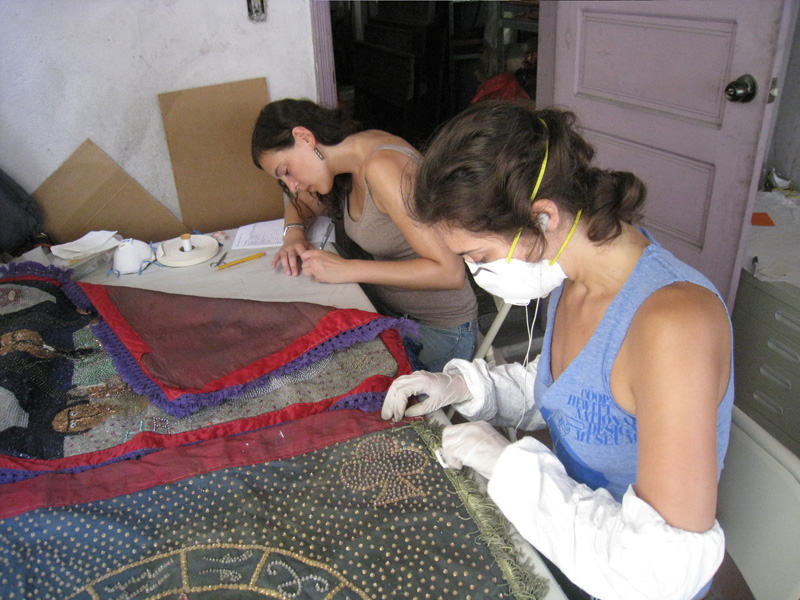
Bethany Romanowski (background) and Sarah Scaturro work on the Marianne Lehmann Vodou Collection, Port-au-Prince, Haiti, July 2011. Photo: Sarah Scaturro, © Smithsonian Institution
From July 11 to 24, 2011, Cooper-Hewitt Assistant Registrar Bethany Romanowski and I were in Port-au-Prince, Haiti as participants in the Smithsonian’s Haiti Cultural Recovery Program. The goal of the program is “to rescue, recover, safeguard, and help restore Haitian artwork, artifacts, documents, media, and architectural features damaged and endangered by the earthquake and its aftermath.” We were sent specifically to work on the Marianne Lehmann Vodou Collection as part of a joint venture between the Foundation for the Preservation, Enhancement, and Production of Haitian Cultural Works (FPVPOCH) and the Haiti Cultural Recovery Project.
Marianne Lehmann, originally from Switzerland, has lived in Haiti for over fifty years. She began collecting Vodou artifacts in 1986, when she bought her first piece from a local Vodou practitioner who was selling ceremonial objects door to door to raise money for an ailing Vodou priest. Lehmann’s desire to prevent these sacred objects from being dispersed throughout the world and to keep them in Haiti spurred her to amass a collection that now numbers over 3,000 objects and fills an entire three-story residence in Petion-ville, Port-au-Prince. It is, without a doubt, the most important collection of Haitian Vodou artifacts in the world. She is renowned and respected by Houngan (priests), mambos (priestesses), and officials throughout Haiti as a protector of her adopted country’s material culture.
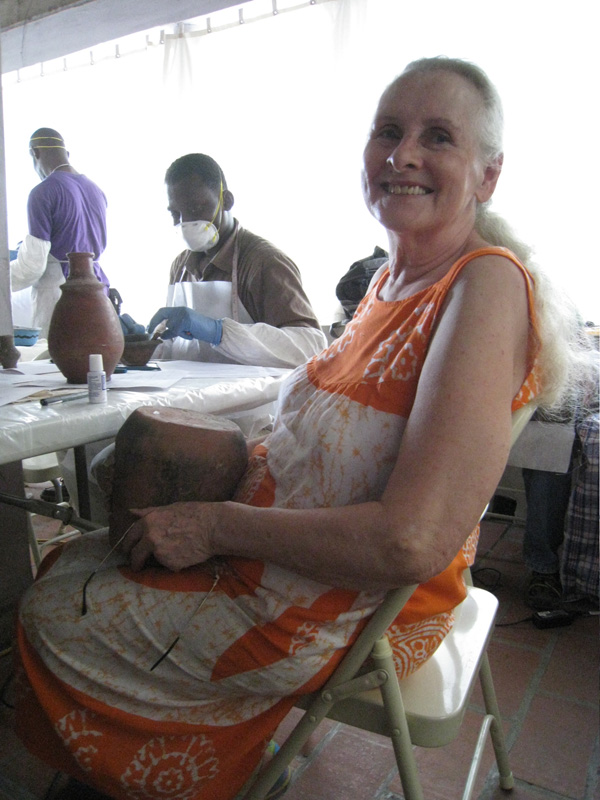
Marianne Lehmann labeling pottery. Photo: Sarah Scaturro, © Smithsonian Institution
The collection includes objects in nearly every medium, including decorated terra-cotta jugs and bowls, porcelain cups and saucers produced in Europe and repurposed for use in Vodou ceremonies, wooden figures, paintings, dolls, bottles, Pake Kongo, human skulls and bones, sequined flags, ceremonial costumes, and numerous mixed-media sculptures that represent Vodou’s various Lwa, or ancestor spirits, each of which is known for a particular trait or characteristic. Particularly impressive is the collection of Bizango warriors, which personify spirits often called upon by the Bizango secret society.
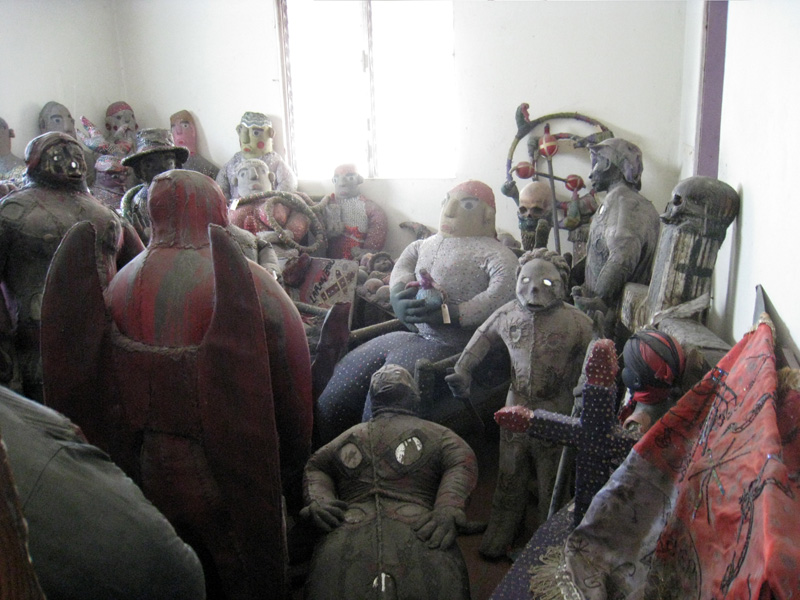 Lifesize Bizango statues and other objects awaiting processing. Photo: Sarah Scaturro, © Smithsonian Institution
Lifesize Bizango statues and other objects awaiting processing. Photo: Sarah Scaturro, © Smithsonian Institution
The collection was left relatively unscathed after the catastrophic January 2010 earthquake – a fact many attribute to the power the objects still hold, even though they were deconsecrated after leaving the Hounfour (temples). However, plans to establish a museum for the objects were shelved indefinitely due to lack of funding and resources, and the collection remains precariously stored, without adequate documentation and security and exposed to decades of dust and pest infestations.
One goal of the Haiti Cultural Recovery Project is to complete an inventory of Lehmann’s collection and create a searchable database that includes key information such as object number, name, dimensions, material, function and location along with a photograph of the object. The objects in the collection must also be organized by type, size, and material in order to maximize the limited amount of space available for storage. Another goal is to surface-clean all inventoried objects and upgrade storage whenever possible, as well as address structural problems with the building housing the collection.
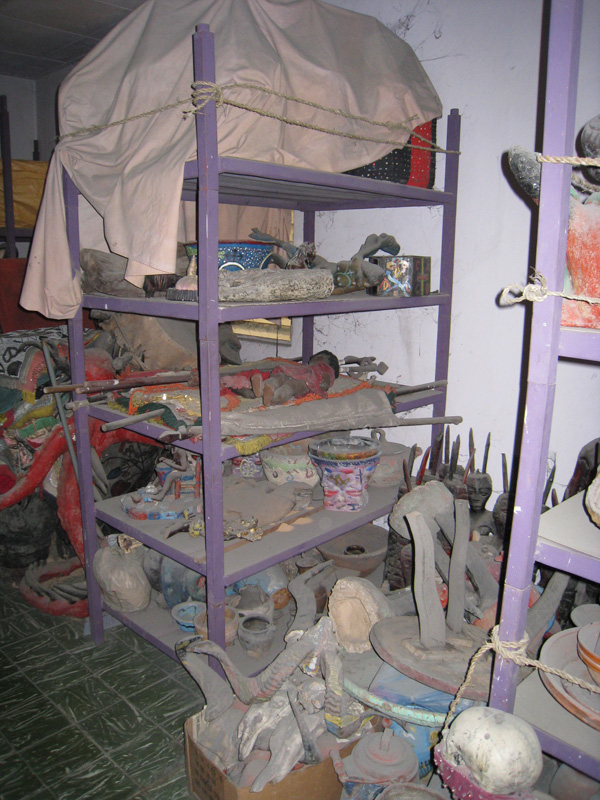 Objects in the collection before being processed and conserved. Photo: Sarah Scaturro, © Smithsonian Institution
Objects in the collection before being processed and conserved. Photo: Sarah Scaturro, © Smithsonian Institution
A team of five Haitians – Project Leader Marie-Lucie Vendryes and Technicians Annette Augustin, Enoy God-Freed, Joseph Junior Racine, and Eddynio Jeune – have been given four months to accomplish this challenging task. Experts from the Smithsonian (including us) and the American Institute for the Conservation of Historic and Artistic Works are rotating through on two-week assignments to assist the core Haitian team. The efforts are coordinated by the Head Conservator of the project, Stephanie Hornbeck. Our particular assignment came at the beginning of the project; Bethany was charged with the important task of assisting in the implementation of proper collections-management policies, and I established conservation protocols for all textiles and objects with textile components.
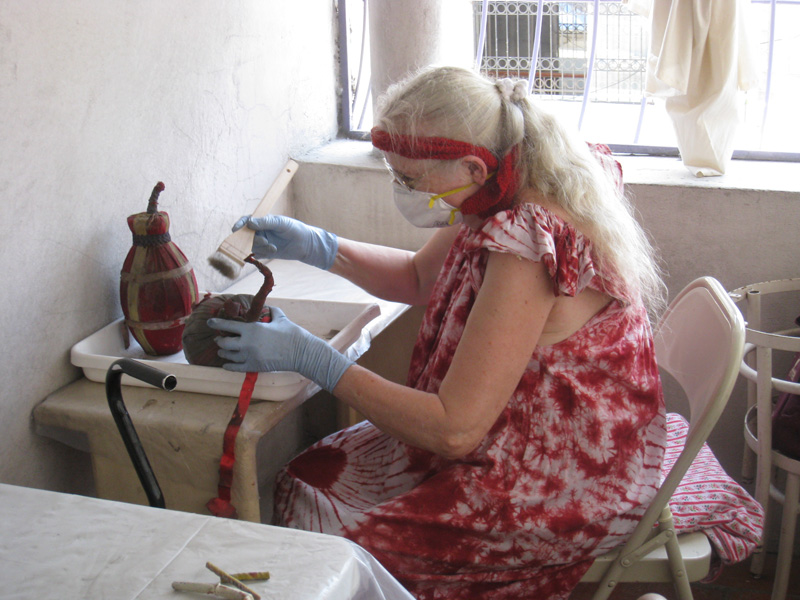 Marianne Lehmann cleaning Pake Kongo. Photo: Sarah Scaturro, © Smithsonian Institution
Marianne Lehmann cleaning Pake Kongo. Photo: Sarah Scaturro, © Smithsonian Institution
Check back soon to hear more about our experiences working on the collections-management and conservation aspects of this project!
Also see: The 2010 movie A Voodoo Memory features Marianne Lehmann and her collection.
2 thoughts on “Haiti Cultural Recovery Project – Part 1”
Micheal on November 5, 2016 at 10:56 pm
kapital lebensversicherung steuerfrei
richard m. edson on December 23, 2019 at 10:03 am
Simply the best collection of Haitian artifacts surround Vodou in the world.
This collection must be saved.
Be sure to include doantion address
Richard Edson, Director
CognoscentiFolkart.com